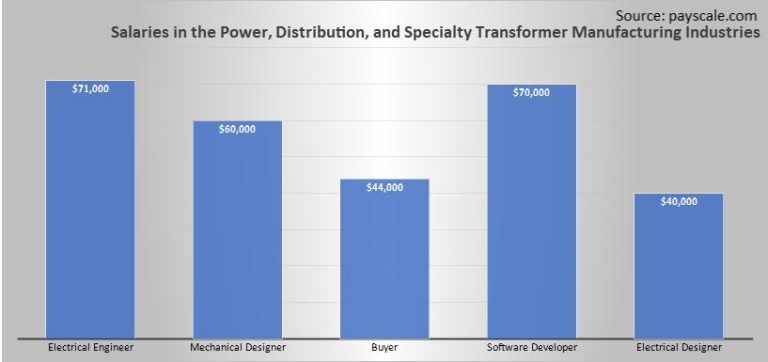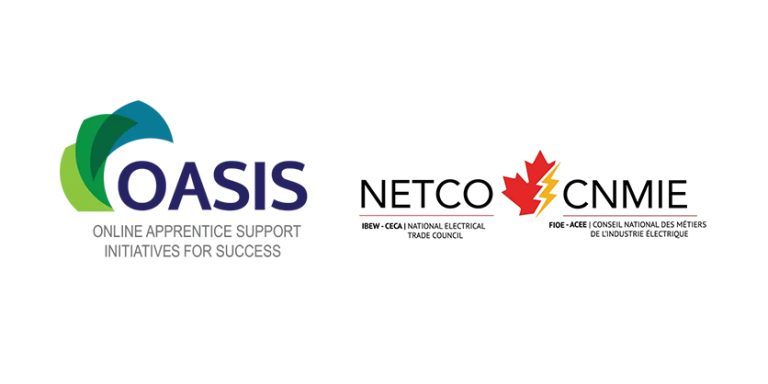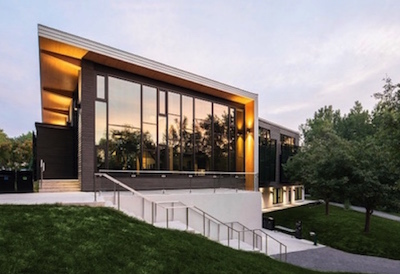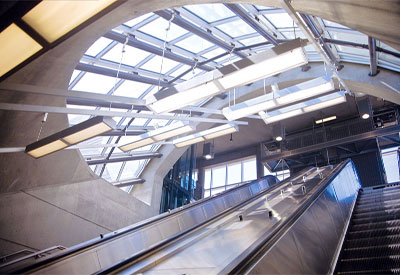Guide to the Canadian Electrical Code, Part I — Instalment 50

June 5, 2019
By William (Bill) Burr
The Code is a comprehensive document. Sometimes it can seem quite daunting to quickly find the information you need. This series of articles provides a guide to help users find their way through this critical document. This is not intended to replace the notes in Appendix B or the explanations of individual requirements contained in the CEC Handbook** but will hopefully provide some help in navigating, while reading the code. The 24th Edition of the CE-C, Part I, (C22.1-18)* is now available from CSA Group.
Annex J18 is optionally permitted for use in additions, modifications, renovations or operation and maintenance of existing facilities employing the Division system of classification. The rules of Annex J18 are normative (mandatory) where used and amend or supplement other requirements of the Code. Additional informative (non-mandatory) information is contained in Annex JB. Due to the size of this Annex, it is discussed in multiple parts. This is the final Part E – Class III, Division 2 locations.
Class III, Division 2
Rules J18-350 to J18-378 apply to installations in Class III, Division 2 locations in which ignitable fibres or flyings are stored or handled.
Rule J18-350 requires equipment installed in Class III, Division 2 to be in accordance with Table 18.
Rule J18-352 requires that transformers and capacitors installed in these locations conform to Rule J18-252, which states that
• transformers and electrical capacitors containing a flammable liquid be installed in electrical equipment vaults in accordance with Rules 26-350 to 26-356
• transformers and electrical capacitors not containing a flammable liquid be installed in electrical equipment vaults as above, or marked for use in Class II locations
• dry-core transformers be installed in electrical equipment vaults in accordance with Rules 26-350 to 26-356, and have winding and terminal connections enclosed in non-ventilated tight housings and operate at a maximum of 750 volt
Rule J18-354 outlines wiring methods, in Class III, Division 2 locations and requires
• threaded rigid metal conduit
• hazardous location cables
• electrical metal tubing
• armoured cable with overall jacket, such as TECK90, ACWU90, copper-sheathed RC90, or aluminum-sheathed RA90
• control and instrumentation cables with an interlocking metallic armour and a continuous jacket in control circuits (Type ACIC)
• Type TC cable installed in cable tray in accordance with Rule 12-2202
• Type CIC cable (non-armoured control and instrumentation cable) installed in cable tray in accordance with the installation requirements of Rule 12-2202 (2), providing the cable is rated 300V and the circuit voltage is 150 V or less and 5 A or less
• liquid-tight flexible metal conduit and connectors, marked for heavy duty
Rule J18-356 requires that switches, controllers, circuit breakers, and fuses in Class III, Division 2 locations be provided with a Type 5 enclosure or have close-fitting covers to prevent the escape of sparks or burning material.
Rule J18-358 requires that transformers, impedance coils, and resistors used as or in conjunction with control equipment for motors, generators, and appliances in Class III, Division 2 locations comply with Rule J18-308, which states that
• they be provided with enclosures conforming to Rule J18-258, and tight housings without ventilating openings, where not located in the same enclosure
• resistors and resistance devices have dust-tight enclosures marked for use in Class II locations, except when these devices are in the same enclosure with switching devices of the control equipment and are used only for starting or short-time duty, in which case the enclosure may conform to the requirements of Rule J18-306
Rule J18-360 requires that motors and generators and other rotating machinery installed in Class III, Division 2 locations conform to Rule J18-310.
Rule J18-360 applies to motors, generators, and other rotating electrical machinery installed in Class III, Division 2 locations and requires that
• they be totally enclosed non-ventilated, totally enclosed pipe-ventilated, or totally enclosed fan-cooled
• where only moderate accumulations of lint and flyings are likely to collect on, or in the vicinity of, a rotating electrical machine and the machine is readily accessible for routine cleaning and maintenance, be
o standard open-type machines without sliding contacts or centrifugal or other types of switching mechanisms, including motor overload devices
o standard open-type machines that have contacts, switching mechanisms, or resistance devices enclosed within tight housings without ventilating or other openings
o self-cleaning textile motors of the squirrel-cage type
• motors, generators, or other rotating electrical machinery of the partially enclosed or splash-proof not be installed in Class III locations
Rule J18-362 outlines that every vent pipe for a motor, generator, other rotating electrical machine or enclosure for electrical equipment in Class III, Division 2 locations
• be dust-tight throughout its entire length
• lead directly to a source of clean air outside a building
• be metal not less than 0.52 mm (No. 24 MSG) thick or equally substantial noncombustible material
• be screened at the outer end
• have protection against mechanical damage and corrosion
Rule J18-364 requires that fixed or portable utilization equipment be marked for use in Class III locations, motors of motor-driven utilization equipment conform to Rule J18-310, and enclosures for switches, circuit breakers, and fuses conform to Rule J18-306.
Rule J18-366 requires that luminaires in Class III, Division 2 locations conform to Rule J18-316, which states that
• luminaires and portable lighting be complete assemblies marked for use in Class III locations and have the maximum wattage clearly marked
• each luminaire be protected against physical damage by a suitable guard or by location
• pendant luminaires be suspended by and supplied through threaded rigid conduit stems, and threaded joints be provided with set screws or other effective means to prevent loosening, and for stems longer than 300 mm, provided with permanent and effective bracing against lateral displacement at a level not more than 300 mm above the lower end of the stem, or flexibility in the form of a suitable fitting or flexible connector situated not more than 300 mm from the point of attachment
• luminaires be supported by boxes, box assemblies, and fittings marked for use in Class III locations
• starting and control equipment for mercury vapour and fluorescent lamps comply with Rule J18-308
Rule J18-368 requires that flexible cords be extra-hard usage type, contain a bonding conductor and be provided with glands marked minimally for use in Class II, Division 1 locations, where entering a a box or fitting required to be dust-tight.
Rule J18-370 specifies that receptacles and attachment plugs be a polarized type that affords automatic connection to the bonding conductor of the flexible supply cord; and be designed so that the connection to the supply circuit cannot be made or broken while live parts are exposed.
Rule J18-372 requires that
• signal, alarm, remote control, and communication systems, meters, instruments and relays contacts that interrupt other than voice currents be provided with a Type 4 or 5 enclosure or have close-fitting covers to prevent the escape of sparks or burning material
• the windings and terminal connections of transformers and choke coils carrying other than voice currents be provided with tight enclosures without ventilating openings
• resistors, resistance devices, thermionic tubes, and rectifiers carrying other than voice currents and exceeding 120 0 C, be provided with Class II dust-tight enclosures
Rule J18-374 requires that electric cranes, hoists, and similar equipment in Class III, Division 2 locations be installed as prescribed by Rule J18-324, which outlines the installation requirements where installed for operation over combustible fibres or accumulations of flyings, travelling cranes and hoists for material handling, travelling cleaners for textile machinery and similar equipment, and requires they conform to the following:
• the power supply to contact conductors be isolated from all other systems, ungrounded, and equipped with recording ground detection equipment that will give an alarm and will automatically de-energize the contact conductors in case of a fault to ground or provide a visual and audio alarm, maintained until the ground fault is cleared
• contact conductors be located or guarded and inaccessible to other than authorized persons and protected against accidental contact with foreign objects
• current collectors be arranged or guarded to confine normal sparking and prevent escape of sparks or hot particles, provide two or more separate surfaces of contact for each conductor to reduce sparking, and keep contact conductors and current collectors free of lint or flyings
• control equipment comply with Rules J18-306 and J18-308
Rule J18-376 specifies that storage-battery charging equipment for Class III, Division 2 locations be located in separate well ventilated rooms built or lined with non-combustible materials constructed to exclude flyings or lint.
Rule J18-378 outlines that other equipment marked with EPL Da, Db, or Dc protection may be installed in a Class III, Division 2 location with a temperature class not greater than T120 °C for equipment that may be overloaded, and not greater than T165 °C for equipment not subject to overloading.
In the next instalment, we will be discussing Annex J20 – Flammable Liquid and Gasoline Dispensing Service Stations, Garages, Bulk Storage Plants, Finishing Processes and Aircraft Hangers in the Class and Division System of Hazardous Locations Classification.
* The source for this series of articles is the Canadian Electrical Code, Part I, (C22.1-18) published by CSA.
** Note the CEC Handbook is also published by CSA.
William (Bill) Burr is the former Chair of the Canadian Advisory Council on Electrical Safety (CACES), former Director of Electrical and Elevator Safety for the Province of BC, and former Director of Electrical and Gas Standards Development and former Director of Conformity Assessment at CSA Group. Bill can be reached at Burr and Associates Consulting billburr@gmail.com.










![Guide to the Canadian Electrical Code, Part 1[i] – A Road Map: Section 52 — Diagnostic imaging installations](https://electricalindustry.ca/wp-content/uploads/2022/11/Guide-CE-Code-2.png)






